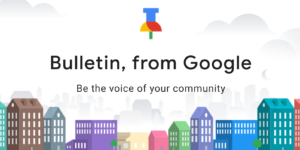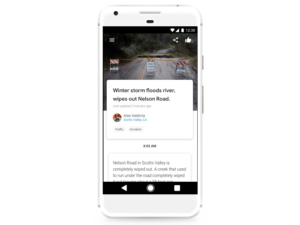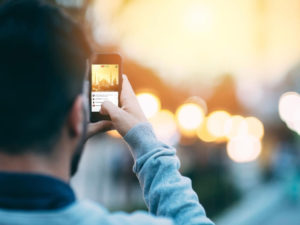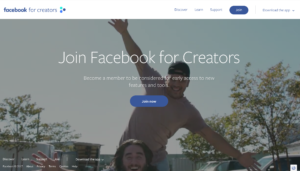Imagine you live in the Miami area where hurricanes and over-flooding are rather not a surprise anymore. You are on the streets trying to find your way safely back home when you see a man helping out a stray dog to find his lost family. Now, you have two options: sharing this news on social media and hoping it will get reposted enough times to eventually reach the dog’s family, or you can share the news along with a photo through Google’s Bulletin where the possibility that the news will reach the dog’s family who might at that very moment be searching Google for animal shelters are greater as your news might be the one to pop out in the search results.
What is Google Bulletin?
Google Bulletin is a new mobile and web app that will let users publish and share a news story by blogging and sharing videos or images straight from their phone or their desktop. It is Google’s latest child that just launched yesterday for its pilot study in two American cities: Nashville, Tennessee, and Oakland, California.
According to Google’s representatives the idea for the new app is to tell “hyperlocal stories about your community, for your community, right from your phone. Bulletin makes it effortless to put a spotlight on inspiring stories that aren’t being told.”
The app will no require any major registrations nor setup to post a story, and once posted to the Bulletin the news stories will be made public and easy to find not only through the app but throughout all Google search results.
“Bulletin is an experimental app that gives people an easy way to tell stories about what is going on around them—ranging from local bookstore readings to high-school sporting events to information about local street closures,” he said. “We are excited to see how people use the app during this pilot phase.” – Google Bulletin Product Manager James Morehead.
How will Google Bulletin work?
Download the app and sign up
Google claims its app is a “free, lightweight app” that can be dowloaded very easily. As of now, Google is running a pilot study that anyone is Nashville and Oakland can sign up for using a short Google Forms questionnaire that besides asking for the basic information like name, city, e-mail address etc., it also will ask about whether the user is a member of the media industry.
The link to the questionnaire can be found here: https://docs.google.com/forms/d/e/1FAIpQLSflVrcKXSMhrrX5mdrf4lZAv1vxclru3h3I2BCMI6ybD3lvdQ/viewform
Share your news story
After downloading the app, users will be able to start creating their news stories right away without the need to go to any third-party websites to set up a blog account. Google will let users upload videos and pictures right to the app, and the news stories will be instantly posted and will appear in Google News and Google Search results. There will also be an opportunity to share the news via emails, the messenger app, and on various social media platforms.
Google Bulletin – a new way into Fake News content creation?
Google and Facebook have both come under fire for allowing fake news to spread all over their platforms. The 2016 US Presidential Elections tickled the spread of thousands of fabricated fake news articles about the political candidates and their respective parties around the internet. The so called political clickbait has evolved into a money making business that got out of control and as many believe was one of the main reasons that influenced how Americans voted.
So, the question that needs to be asked here is how is Google going to verify the accuracy of every single news story put out there?
Although, the company still has not addressed this issue, they did say that any “deceptive behavior” will lead to a removal of Google accounts. Unfortunately, this does not address the issue of misinformation.
Even though, Google Bulletin seems to be aiming at the coverage of local events and happenings rather than hard cover news stories, as of now, it seems like a legitimate threat to elevating the amount of misleading information available online, as anyone will be able to create content on whatever topic they want.
By putting such power in the hands of the people, the app has the potential to either bring local communities closer together, or tear them apart. In order to prevent the second option from happening, the new Google platform will need to think of ways to first of all, tweak their algorithms to allow for fast fact-checking and diminishing of suspect sites. Second, Google will need to put in effort in campaigns that will teach media literacy so that people can learn how to distinguish between the news sources and how to recognize which ones are biased on their own.
Sources:
https://thenextweb.com/google/2018/01/26/google-is-building-bulletin-a-hyperlocal-community-news-service/
https://www.engadget.com/2018/01/26/google-bulletin-hyperlocal-news-updates/
http://www.businessinsider.com/google-bulletin-fake-news-2018-1?IR=T
Google experiments in local news with an app called Bulletin






















